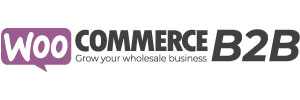Are you at the helm of a brick-and-mortar procedure that’s ready to increase into the on-line realm? Or, do you have an existing eCommerce system and Sage Business Cloud software solution but are struggling with information concerns as well as inefficiency because they’re not integrated?
Regardless, you’ll benefit from these 8 ideas for making eCommerce integration as smooth as feasible.
What is eCommerce Integration?
Basically, eCommerce integration is the process of collaborating your business’s eCommerce modern technology to work in integration with the Sage Business Cloud system that handles your back-end performance..
This integration is required for several factors. For one, it allows a bidirectional info circulation, implying that both systems can interact with and notify each other. This indicates you just need to go into data once..
eCommerce integration also supplies vital performances, chief among them the ability to set up automatic inventory updates on both the front-end (as product is added) and also back-end (as customers make purchases). This real-time data is vital for both customers, as well as your internal staff member.
Finally, as your eCommerce service grows and demand rises, eCommerce integration can allow your business to scale without hiring extra staff.
Ready to embark on your eCommerce integration? If so, below are a few important considerations to keep in mind.
1. Include Various Stakeholders
We suggest asking stakeholders to share their discomfort factors and also service needs prior to the integration task starts and utilizing this to educate your project strategy. On top of that, you must ask your executive group for input so you can make certain business-IT alignment regarding project objectives.
An effective integration task incorporates insights from stakeholders throughout several practical areas. This offers you an extensive understanding of how systems are presently utilized and also exactly how you can maximize each one.
2. Improve Your Business Processes
As you determine discomfort factors, you might find that a few of your tried-and-true business processes are no longer as efficient as they once were. To this end, do not hesitate to carry out organization procedure reengineering so you can figure out just how you can do things better, quicker as well as a lot more successfully once your Sage Business Cloud software application and eCommerce system are working as one.
3. Focus on Organizational Change Management
It goes without stating that a few of the procedure adjustments you launch may be met with reluctance and also pushback from a few of your employee. That’s why it’s likewise important to focus on organizational adjustment monitoring.
One element of adjustment monitoring is plainly interacting the nature and also objective of upcoming adjustments to employees, so they do not attract their own final thoughts. This minimizes adjustment resistance and constructs adjustment expertise within your company, at every level.
4. Take a Future-focused Approach
If you don’t currently have an eCommerce system or you’re looking for a brand-new one, it’s ideal to search for a solution with the most crucial functionality you need today, as well as in the future.
Consider what features you may require as your eCommerce existence grows. Suppose you increase your multichannel technique?
Having a robust system is essential when it comes to integration because you do not want to need to go with another integration in a couple of years when you recognize you need a various system because the one you picked could not keep up with your business’s development.
5. Consider SaaS Systems
An application programs interface (API) can make eCommerce integration much easier. Utilized in software-as-a-service (SaaS) cloud-based designs, these interfaces assist specify communications between both software program systems, accelerating the process as well as making the final solution much more easy to use.
As you evaluate Sage Business Cloud suppliers, consider focusing on those that use a SaaS design, which can likewise provide accessibility to a majority of synchronizations.
6. Choose Bidirectional Integration
As discussed, one benefit of eCommerce integration is bidirectional info flow. Yet not all integration follow this methodology. Some professionals might recommend a various approach based upon the systems and also channels you’re currently using.
Still, bidirectional integration is usually chosen. This way, you can make updates in real-time and also just do so as soon as, ensured that everything is updated where it needs to be.
At the same time, you can additionally exercise control over how and when the platforms obtain particular updates. For instance, if you wish to save unique prices updates for a promotional event, you can make the modification in Sage Business Cloud without migrating it over to your eCommerce platform.
7. Plan to Test
As you plan your integration routine, don’t fail to remember to permit plenty of time for testing. Unavoidably, there will certainly be issues and synchronization errors in the process, and also you may only have the ability to identify them throughout the screening stage.
Falling short to assign this time around might indicate finding the problems much later, when it’s far too late to make a quick or affordable fix.
8. Develop a Wider Integration Framework as You Implement New Best-of-breed Solutions
An eCommerce and Sage Business Cloud integration can be a beneficial solution for many firms. Yet, several business will certainly need to increase this setup right into a broader integration structure that includes various other software application systems, such as CRM, HCM or any other system you may carry out as part of a best-of-breed approach.
This is why it is very important to take a future-focused technique when determining your integration method or examining brand-new eCommerce software application.
Successfully Manage Your Sage Business Cloud and eCommerce Integration
Do you have a digital service model, or are you planning to produce a new digital business version? If so, eCommerce integration is necessary. Simply put, don’t “social distance” your eCommerce system from your Sage Business Cloud system.
You currently know how powerful an Sage Business Cloud system can be. Take into consideration exactly how you can increase its possible by incorporating it with your existing or brand-new eCommerce system. You’ll be able to increase your procedures, expand your audience and also develop your bottom line.
Searching for assistance as you begin this effort? We ‘d love to assist. Ask for a totally free consultation with our sales team.












